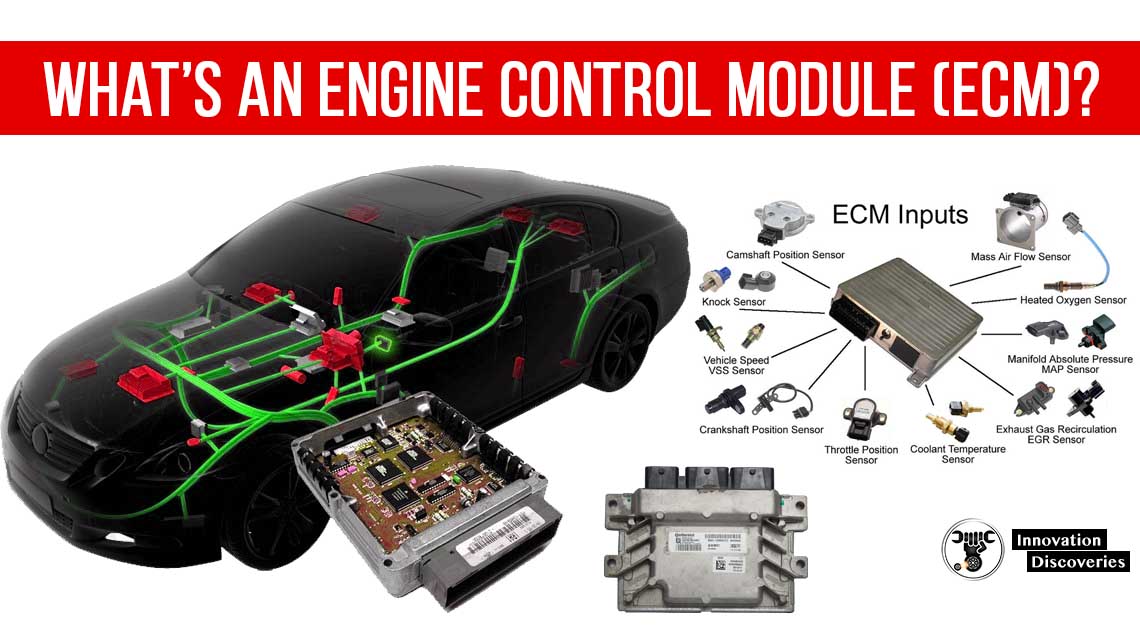

CAR ECM HOW TO
And it's composed of hardware (a pretty standard circuit board) that's encoded with software (a program that tells the car how to run). There's a microprocessor that receives, interprets and reacts to sensor inputs as fast as they occur. The ECM is a computer, and features many of the same parts as the computer you have at home or at work. That sounds like a lot to keep straight, doesn't it? So, on top of it all, the engine control module, unit, or what have you, runs through a recalibration test every time you turn on the car, just to make sure signals don't get crossed. And with all those sensors already in place, the ECM is often responsible for managing features like anti-skid brakes, cruise control and theft protection. The ECM also makes sure the car meets emissions standards, by monitoring and regulating the fuel mixture to ensure the engine isn't running too rich and emitting pollutants beyond the established parameters. The idea is to allow it to run well enough to get to a repair shop, but not strand you on the side of the road.
CAR ECM DRIVER
If all the sensors involved don't agree on the right position, the computer will send a signal to the engine and transmission to run in Limp Mode (preventing the driver from achieving high speeds that could get out of hand) and also sends an alert to the instrument cluster. This helps control and prevent an uneven idle. Part of the ECM's start-up procedure is to calibrate the position of the throttle at idle - in other words, remind itself, and the throttle, how the engine should run when it's not being given any gas. Now, an electronic sensor at or near the gas pedal sends a signal via electrical wire to the engine management system, which evaluates your throttle contact and then sends a signal to the engine to adjust fuel dosage. Previously, when your foot made contact with the gas pedal, it was connected to a cable that went directly to the engine so the engine could decide how much fuel to inject, based on whether you caressed the pedal, mashed it to the floor, or most likely, somewhere in between. One of the most recent tasks (in the last decade or so, anyway) delegated to the engine computer came about only as automotive companies switched from mechanical throttle control to electronic throttle control.
CAR ECM UPDATE
Newer engine computer systems also feature lightweight, low-cost memory systems that can be easily accessed by the dealership to fix programming issues and update specifications (kind of like running a system or software update on your computer).
CAR ECM CODE
When there's a problem, the ECM stores a trouble code so it can be diagnosed by a mechanic (with a scanner specifically designed for that purpose) and triggers the check engine light so the driver knows something's wrong. When something goes wrong, the ECM adjusts conditions or, if it can't, the car won't run properly or at all. But the ECM accomplishes its considerable chore by constantly monitoring a vast network of sensors around the car to ensure conditions are within normal operating range.

That sounds simple, kind of in the same way an engine itself sounds simple if you break it down into really basic terms. The engine control module basically controls the intersection of the engine's necessary ingredients to make energy - fuel, air and spark. So if you or your mechanic is going crazy trying to figure out why your car won't run, it might be because your car's ECM is just tired from doing it all, and needs some attention. Sometimes, the engine control module is at fault for issues that would often be assumed to be "mechanical," like engine noise or problems with the engine running smoothly. And from there it can get confusing, because there's a whole rat's nest of electrical terminology to trace and pick through. If you type "electronic control module," or its better-known acronym, ECM, into the search field, you'll be gently guided over to the ECU (engine control unit) page. And if that's not enough to enlighten you, well, at least you weren't the first to ask those questions. "Engine control" is a no-brainer "module" implies it's electrical in nature. Sometimes, the names of automotive components are so bizarre that we forget that some terms are completely intuitive and logical. The engine control module might betray a few hints, even in name alone. Sometimes, the symptoms of electrical problems don't even seem electrical in nature.

They're difficult to trace, often come and go as they please (enabling the mechanic's favorite cop-out response, "Could not replicate problem") and the symptoms often appear far from the source. Of all the things that can go wrong with a car, electrical system flaws are some of the most maddening.


 0 kommentar(er)
0 kommentar(er)
